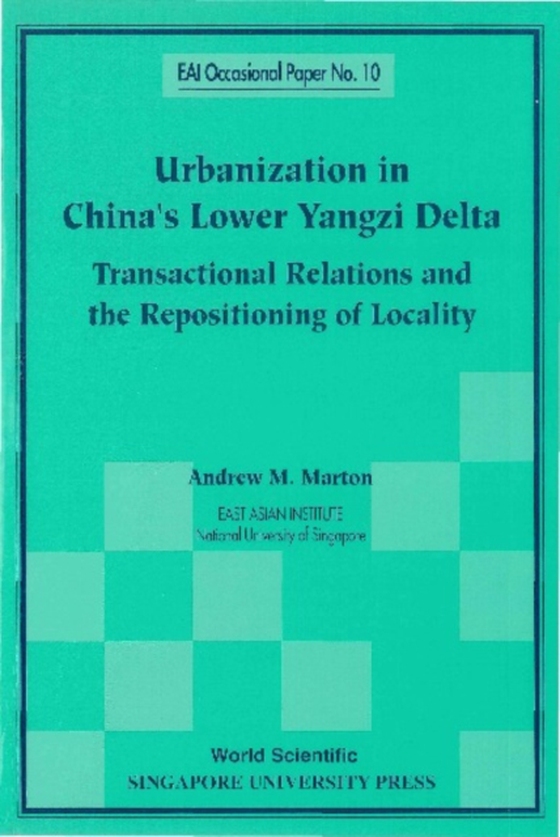
Urbanization In China's Lower Yangzi Delta: Transactional Relations And The Repositioning Of Locality e-bog
135,33 DKK
(inkl. moms 169,16 DKK)
The development of market socialism in China has contributed to a remarkable spatial economic transformation in particular areas of the Chinese countryside. The conventional wisdom of existing theories of urban transition does not adequately explain the emergence of these open textured landscapes of mixed agricultural and non-agricultural activities. This paper examines some of the key processe...
E-bog
135,33 DKK
Udgivet
16 december 1998
Længde
60 sider
Genrer
1FPC
Sprog
English
Format
pdf
Beskyttelse
LCP
ISBN
9789814495288
The development of market socialism in China has contributed to a remarkable spatial economic transformation in particular areas of the Chinese countryside. The conventional wisdom of existing theories of urban transition does not adequately explain the emergence of these open textured landscapes of mixed agricultural and non-agricultural activities. This paper examines some of the key processes and mechanisms of regional restructuring in one county level jurisdiction in the lower Yangzi delta. A case study of Kunshan situates the emergence of specific patterns of industrial production within a complex network of interactions and interrelationships embedded in overlapping administrative and institutional structures which are themselves largely tied to the circumstances of particular places. Two central findings are revealed. First, the patterns and underlying processes and mechanisms of regional development in the delta are fundamentally linked to intensely localized exigencies and opportunities within the wider space economy. Second, external economies, the dynamics of agglomeration, and the role of large cities and other exogenous forces, while significant, were less important in the delta than were endogenous forces. Highlighted are a number of issues which need to be accommodated in a new conceptual framework for understanding and explaining urbanization in China's lower Yangzi delta. The paper concludes by outlining a planning and management agenda which responds to the resulting conceptual and analytical shift in emphasis.
 Dansk
Dansk

